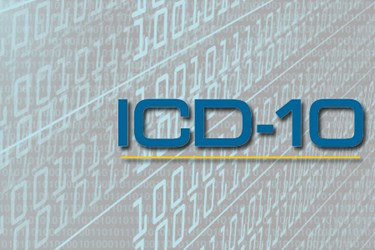ICD-10 Migration Tops Purchasing Intentions For 2015

By Christine Kern, contributing writer

Sixty percent of healthcare facilities plan to invest in data analytics this year.
A Peer60 report reveals healthcare systems appear to be moving faster to embrace data analytics technology in their IT investments. It also found that ICD-10 migration topped the list of planned issues for IT staffs. All told, Peer60 projects healthcare providers will spent billions on technology during 2015.
According to the study, 58 percent of all hospital administrators said the ICD-10 transition was a priority, a number that jumped to 70 percent among COMS, CIOs, CFOs, and CMIOs. “Given the impacts this migration will have on hospital operations and fiscal health, this isn’t very surprising,” the report read.
The report found more than 25 percent of hospital leaders plan to purchase an enterprise analytics suite or at least one analytics tool in 2015, with 30 percent of these being first-time vs. replacement purchases. And more than 60 percent of CIOS report their organization was planning to make Data Analytics purchases during 2015. But while data analytics are gaining momentum, perhaps surprisingly data security has fallen to the bottom of the leading issues for executives.
With the recent spike in medical identity theft and data breaches, it is a bit surprising that data security did not register higher on the intentions scale in the report. Only 24 percent of those surveyed stated their organizations planned to make a data security investment during 2015, with CIOs and IT Managers being most responsible for those purchases.
Meanwhile, only 22 percent of respondents indicated they were definitely renewing their existing data security products. Of the remainder, 23 percent stated that they were leaving their existing vendors, while 55 percent were “unsure” of their replacement plans.
Other top issues of importance included patient engagement and population health solutions even though many hospitals express uncertainty over specific vendors or solutions. “The critical market for patient engagement is still forming as almost 40 percent of hospitals don’t have a solution yet,” the report notes. “That isn’t stopping hospitals that already have patient engagement solutions from making changes, though.”
That there is still a high level of uncertainty on future purchasing “indicates that many people within hospitals know what is going on with Patient Engagement,” the report added. However, “most C-Level Executives and management in operations and quality seem to be aware of what is happening.”
With population health management, more than 50 percent of hospitals said they will be selecting a new solution this year, which “makes quite a bit of sense given that legislation is forcing hospitals to move towards value and quality of patient care,” the report notes. “In other words, the population health management market in 2015 is going to be absolutely gigantic.”
Ultimately, the report concludes, “Billions are going to be spent in 2015 on medical technology and this report of data collected just a few weeks ago shows where a lot of that money is headed. Many hospitals are unsure how they are going to spend in 2015, which leaves an opening for vendors that are struggling to regain footing. It also serves as an opportunity for those who are dominating to increase their lead.”
